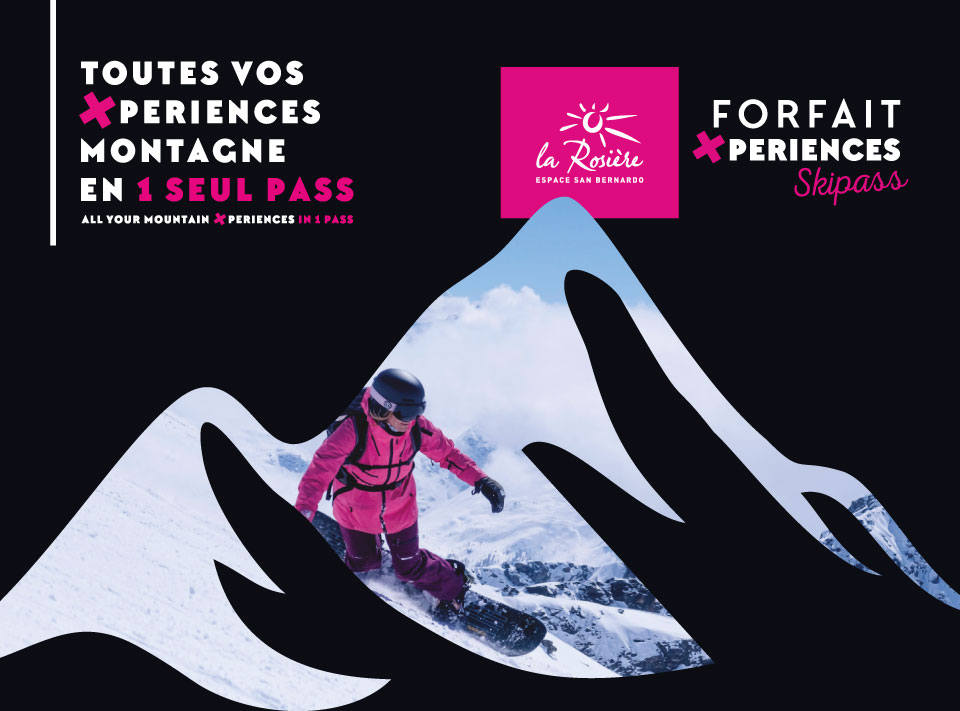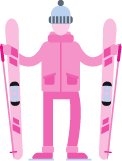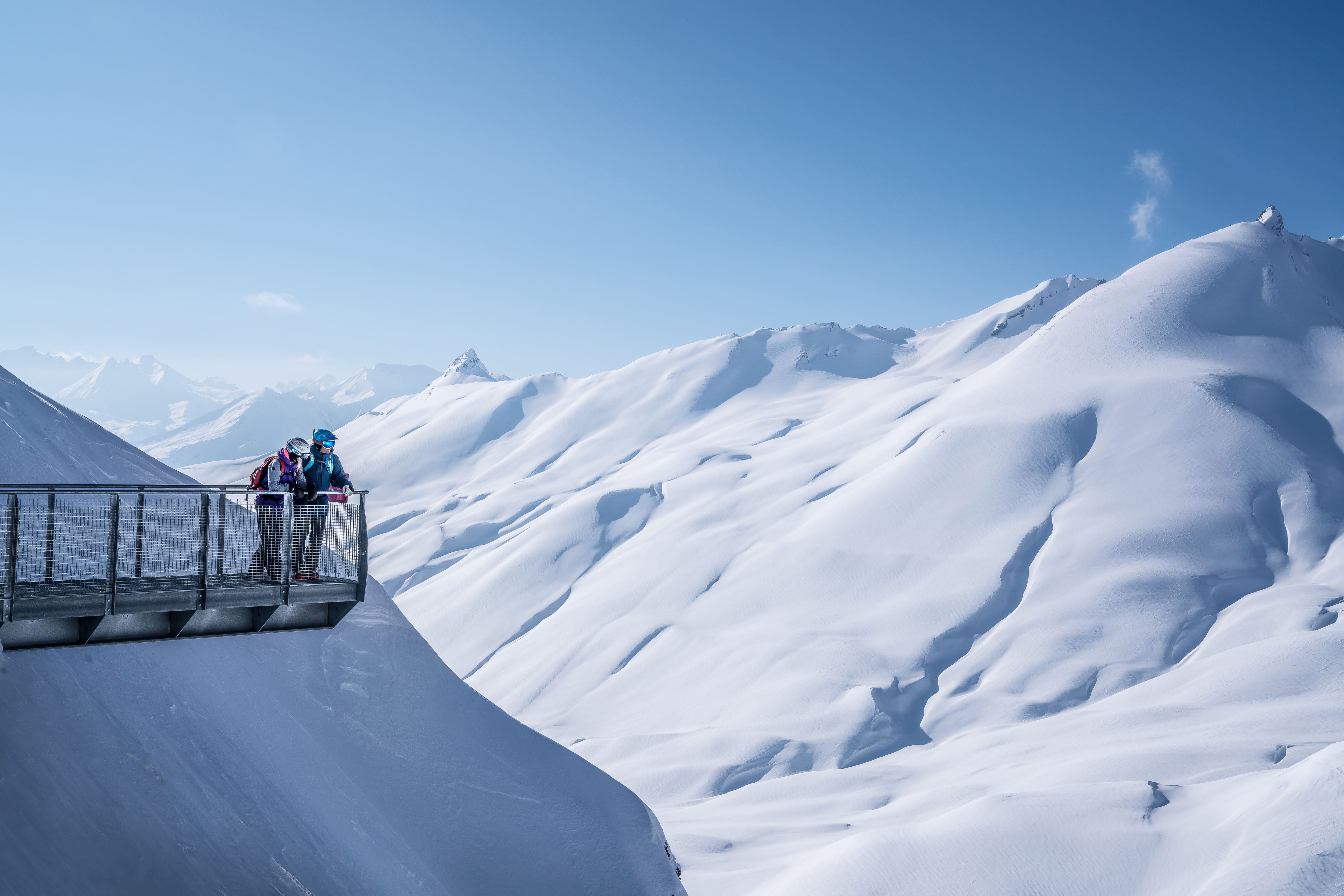
Make your ski holiday in La Rosière unforgettable!
Discover the all-in-one skipass: skiing, advantages, exclusive services and sports activities to make the most of your stay in La Rosière!
The hardest part will be knowing where to start...
The most Italian of French ski resorts
At an altitude of 1850m, just a few minutes from Italy, La Rosière is regarded as the gem of the Haute-Tarentaise.
This jewel shines for several reasons:

At La Rosière, on the balcony of the Tarentaise, with a 180° view. Enjoy the sunsets and the revitalising light.

The Espace San Bernardo is unique in Savoy. Since 1984, it has linked La Rosière and La Thuile (Italy). A journey across Europe at the tip of your skis to discover new panoramas and a different culture, so close yet so different.

La Rosière ski resort benefits from favourable weather conditions, guaranteeing excellent snow cover from mid-December to the end of April and one of the snowiest ski areas in the Northern Alps.

In front of you is the majestic Mont-Pourri, a reminder of how small we feel in the face of Mother Nature.

miles of ski slopes

ski slopes

ski lifts

funs areas























